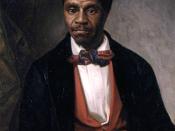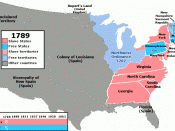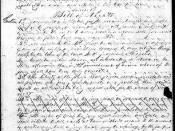Various factors influenced sectional conflict during the early 19th century. Though each reason is in itself different, each revolves around the one central issue of slavery. The Constitution, in itself, never directly addressed the issue of slavery. While there were several documented attempts at synthesizing the interests of the Southerners and Northerners, it became inevitable that war was needed in order to resolve such a dispute. In essence, each attempt at compromise actually fueled more hostility and aggravation on each side. But, while the growing bitterness was undoubtedly the result of compromises and decisions, the original cause of this animosity was the issue of slavery. The Constitution did not cause the sectional discord in America that eventually led to the South seceding from the Union; it simply highlighted the fact that there was no sufficient compromise over slavery.
Arguments could very easily be made that the Constitution was at fault for the secession of the South in 1860.
The Constitution was the founding document that this country was based on and therefore should include all major issues that are relevant to the country. The Constitution did specifically avoid the issue of slavery upon being written. The Constitution includes many compromises between different groups of people carrying different opinions. In some cases not all people would agree on a particular issue; at that point, the majority would vote or a compromise would be passed that was agreeable by a majority. Slavery was an issue of such high controversy, it could not be included in the Constitution. There was such a division between those for slavery and those against that compromise seemed inedible. The Constitution was then constructed and carefully worded to leave out any direct regard to slavery.
The Constitution's lack of clarity allowed for two distinct interpretations of its purpose...


